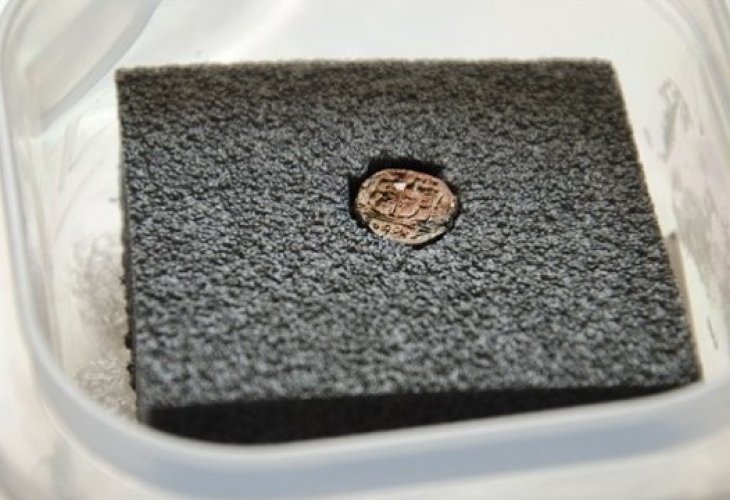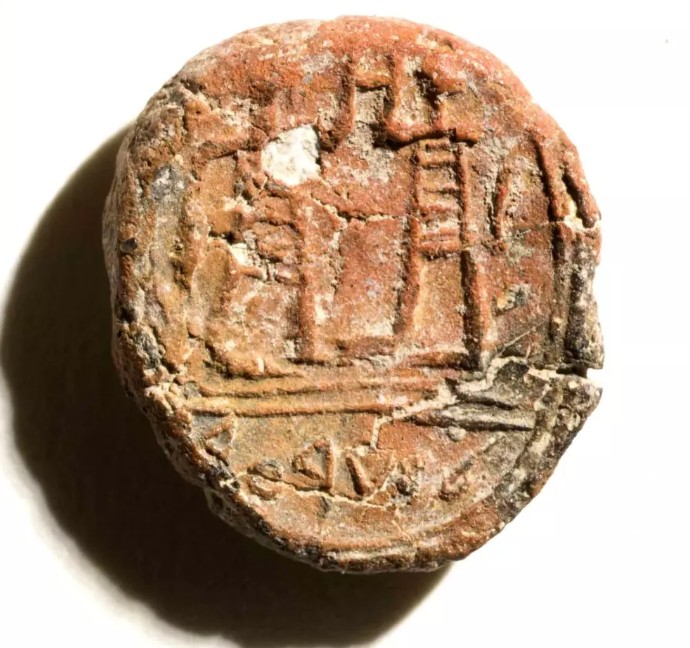A Rare Discovery: 2,700-Year-Old Seal Impression Unearthed near the Western Wall
During an archaeological dig, a significant discovery dating back 2,700 years was made near the Western Wall: "This is archaeological proof supporting biblical accounts of a city official in Jerusalem from around 2,700 years ago."
 (Photo: Yuli Schwartz, Israel Antiquities Authority)
(Photo: Yuli Schwartz, Israel Antiquities Authority)During an archaeological excavation conducted by the Israel Antiquities Authority, an exciting and important discovery was made near the Western Wall, dating back 2,700 years.
The find is from the First Temple period and is a seal impression with the words "Belonging to the city official" inscribed in ancient Hebrew script. The seal belonged to a senior figure who held a position in Jerusalem over 2,500 years ago.
This discovery was unveiled during the archaeological dig by the Israel Antiquities Authority in cooperation with the Western Wall Heritage Foundation.
The seal impression is a unique piece of clay that was stamped and pre-fired. The artifact is 15 x 13 mm in size and 2–3 mm thick. Its upper part depicts two figures facing each other, and at the bottom, the ancient Hebrew inscription is visible.
The seal was discovered by Shimon Cohen, the excavation director, during the sifting of soil from a building dating from the end of the First Temple period, the 7th–6th century BCE.
The exact usage of the seal impression is not yet known. According to Dr. Shlomit Weksler-Bdolah, director of the Western Wall excavations for the Israel Antiquities Authority: "It may have been attached to an important shipment, serving as a 'logo' or a miniature souvenir that was added to shipments sent by the city official."
Dr. Weksler-Bdolah also noted that "It is possible that one of the buildings in our excavation area was the destination for the shipment sent by the city official. The discovery of the seal bearing the high title, along with a collection of seals previously found in this structure, strengthens the impression that here, in the current Western Wall Plaza on the slopes of the ancient city's western hill and approximately 100 meters west of the Temple Mount, was a residential area for high-ranking officials in Jerusalem at the end of the First Temple period."
 The city official is mentioned twice in the Bible. The 2,700-year-old seal (Photo: Clara Amit, Israel Antiquities Authority)
The city official is mentioned twice in the Bible. The 2,700-year-old seal (Photo: Clara Amit, Israel Antiquities Authority)Dr. Weksler-Bdolah continues to state that "This is the first time such a seal impression has been discovered in an archaeological excavation. This provides archaeological proof supporting biblical accounts of a city official in Jerusalem from around 2,700 years ago."
Professor Tali Ornan from the Hebrew University and Professor Benjamin Sass from Tel Aviv University studied the seal and describe: "On a double-standing line, two men face each other, one almost a mirror image of the other. Their heads appear as large dots without any detailing. Their hands facing outward droop down, while their inward-facing hands are raised, seemingly holding something together, perhaps a crescent. Each figure wears a striped garment reaching roughly to where the knees would be, though these are not depicted. Below the standing line, the inscription in ancient Hebrew reads 'L'Sar Ha'ir' – meaning 'Belonging to the city official', without separations between the words or a definitive article."
Prof. Ornan and Prof. Sass add: "The title 'city official' is known from the Bible and extra-biblical documents, referring to the person appointed over the city by the king. References to city officials appointed by the king to the highest municipal position in Jerusalem appear twice in the Bible - in the Book of 2 Kings, Yehoshua, the city official of Jerusalem during King Hezekiah’s time, is mentioned, and in the Book of 2 Chronicles, Maaseiah, the city official of Jerusalem during King Josiah’s time, is noted."
The seal impression was first presented to Jerusalem Mayor Nir Barkat last week during his visit to the Davidson Archaeological Gardens near the Wall. Upon the completion of research, the seal will be placed in the mayor's office for display.
Jerusalem Mayor Nir Barkat's reaction to the rare find: "It is incredibly exciting to receive a message from Jerusalem during the time of the First Temple, showing that even 2,700 years ago, Jerusalem, the capital of Israel, was a strong and central city. Jerusalem is one of the world's oldest capitals, where the Jewish people have lived continuously for over 3,000 years, and today we have the privilege to recognize yet another link in the long and incredible chain of individuals and leaders who developed and built the city. We are fortunate to live in a city with a glorious past, and it is our responsibility to develop and strengthen Jerusalem for future generations, which we do every day."
According to Dr. Yuval Baruch, Jerusalem area archaeologist for the Israel Antiquities Authority: "The extraordinary importance of these findings has led the Antiquities Authority to conclude that the special structure from the First Temple Period, uncovered in the Western Wall Plaza, should be preserved and developed as a site for visitors."

